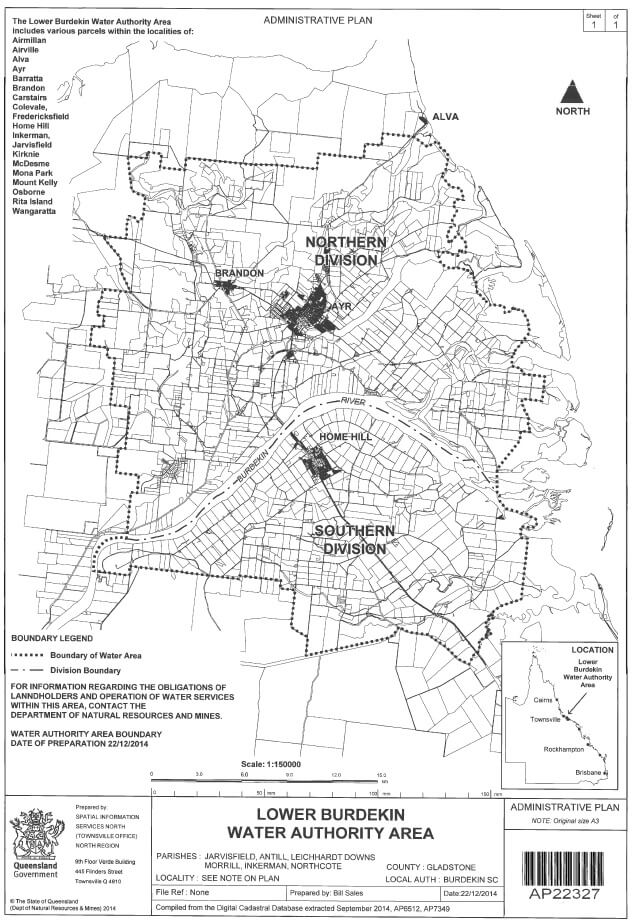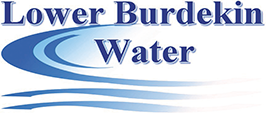The Burdekin Delta is an ‘Open Aquifer’. Groundwater of good quality is contained against the sea with constant leakage to that environment. The Delta Aquifer is subject to six processes which affect the water level:
- Rainfall recharge
- Irrigation withdrawal
- River recharge
- Flood recharge
- Artificial recharge
- Leakage to the ocean.
Rainfall is an uncontrolled event which provides natural benefit directly to crops and then percolates through the soil to the aquifer.
Groundwater extracted from the aquifer is used for crops as well as domestic water supply in some cases. Private bores lift water to the surface and on farm. Local Authority (Burdekin Shire Council) bores provide town water and industrial supply through reticulated infrastructure.
River pumping is an LBW activity to lift water from the Burdekin River for distribution throughout the Authority Area. Surface water is directed into ‘recharge areas’ or supplied to Farmers which compliments replenishment by ‘water spreading’.
Recycling irrigation tailwater on farm is a limited practice due to the nature of delta soils and leakage of retention ponds to the aquifer.
Permeability of delta soils assists in the retention of irrigation excess, providing cheap drainage to the aquifer of water not taken up by the crop or transpiration process.
Groundwater moves freely through streams in porous areas of the aquifer, however texture of sedimentary deposits do vary considerably from pure coarse sand with large stones to heavy clay.
The delta area within tidal limits is a good example of progression of the flood plain where heavy clay mud islands carry vegetation, and the creeks in between are gradually silting up with outflow of mostly porous sandy material. LBW has areas alike to old mangrove islands below top soil which generally have poor quality groundwater and almost no bore field potential. Zones of differing quality exist and are the result of either leakage of higher salinity groundwater from adjacent bedrock on the southern boundaries or from old seawater contained within the sediments as part of a ‘natural saltwater wedge’.
Facts:
The district’s early settlers described our underground water supply as “liquid gold”.
The Burdekin District is the largest cane growing area in Australia.
Lower Burdekin Water was established on Wednesday 18th February, 2015 after the successful dissolution and amalgamation of the former North and South Burdekin Water Boards.
The former South Burdekin Water Board Area and Board was originally constituted by Order in Council dated 31st March, 1966, and continued under the Water Act 2000.
The former North Burdekin Water Board Area and Board was originally constituted by Order in Council dated 13th May, 1965, and continued under the Water Act 2000.
LBW is to utilise part of the flow in the Burdekin River to replenish the subterranean water supply in that part of the Burdekin Delta north of the Burdekin River and to thereby increase the quantity and improve the quality of the supply available from this source for irrigation, and purposes.
Queensland Water Service Provider (SPID571)
Lower Burdekin Water is a registered Service Provider under the Queensland Water Act 2000 holding registration number SPID571 for carrying out its function as a Category 2 Water Authority under this act.
Generally, LBW has the power under the Water Act 2000 to:
- make and levy rates and charges
- take land
- employ people; and
- delegate its powers

